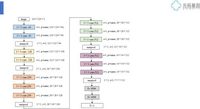A Novel Deep Learning Framework Enhances Colorectal Cancer Survival Predictions
A new multimodal computational approach integrates histopathological images and molecular data to improve survival prediction for colorectal cancer patients.
Colorectal cancer (CRC) represents a significant public health challenge, with alarming incidence rates reaching approximately 590,000 new cases in China and 160,000 in the United States in 2022. As the second most common cancer in China and the fourth in the U.S., CRC is associated with high mortality rates, primarily due to its tendency towards metastasis and recurrence. Predicating survival outcomes in CRC patients could not only guide treatment decisions but also improve clinicians' understanding of life expectancy.
To tackle existing challenges in accurately predicting CRC survival, a recent study published in Scientific Reports proposes a novel multimodal deep learning framework employing Multimodal Compact Bilinear Pooling (MCBP). This sophisticated model integrates histopathological images, clinical information, and molecular data, offering a synergistic approach to enhance survival predictions.
Using a dataset from The Cancer Genome Atlas (TCGA) consisting of 84 CRC samples enriched with histopathological images, clinical data, and genomic profiles, the researchers explored multiple prediction methodologies. Notably, models utilizing only histopathological images achieved an area under the curve (AUC) of 0.743. However, incorporating clinical factors and gene mutation data improved this significantly, yielding AUCs of 0.771 and 0.773, respectively.
While previous studies have attempted to predict CRC survival using various omics data, the integration of histopathological images in conjunction with molecular data has remained underexplored. "Histopathological images can reasonably predict the 5-year survival of CRC patients, and that the appropriate integration of these images with clinical or molecular data can further enhance predictive performance," the authors stated.
In conducting their research, the authors highlighted the critical role of accurately identifying prognostic factors that influence survival. The study segregated patient samples into Long-term (LT) and Short-term (ST) groups based on their 5-year survival rates, revealing significant survival differences across varying tumor stages—specifically noting the associations of N0 (no regional lymph node metastasis) and N1/N2 indices with survival.
The study's predictive framework employs a comprehensive array of data analyses, examining clinical features, gene expression levels, and somatic mutations to ascertain the intricacies of CRC prognosis. Using statistical methods such as Fisher’s exact test, the research identified seven genes with varying mutation frequencies that correlate with survival timelines.
Further, a differential gene expression analysis using tools like DESeq2 uncovered 203 significantly high or low-expressed genes in the LT versus ST groups, highlighting key biological pathways that could impact survival outcomes. By combining genomic data with imaging in this multimodal approach, the research sheds light on potential biomarkers that may assist in more tailored and effective treatment strategies for CRC patients.
The presented framework emphasizes the power of deep learning in processing complex medical data, promising to revolutionize traditional approaches to cancer prognosis. As technology continues to advance, the incorporation of artificial intelligence in health care is anticipated to improve patient outcomes significantly, particularly for colorectal cancer survival predictions. "This study demonstrates that molecular data, when combined with images, can provide new ideas for predicting survival," concluded the authors.
In summary, the adoption of integrated multimodal deep learning approaches signifies a promising step forward in CRC prognosis, potentially reshaping treatment methodologies and improving the overall management of colorectal cancer, with significant implications for future research and clinical applications.




